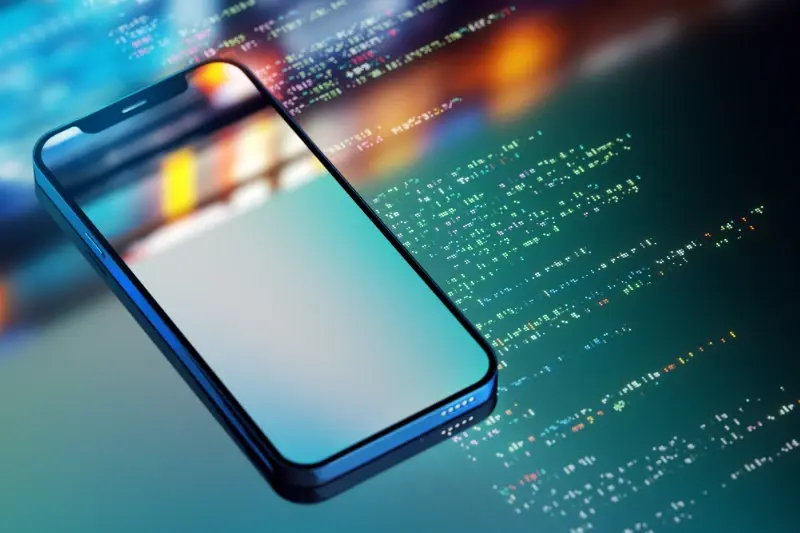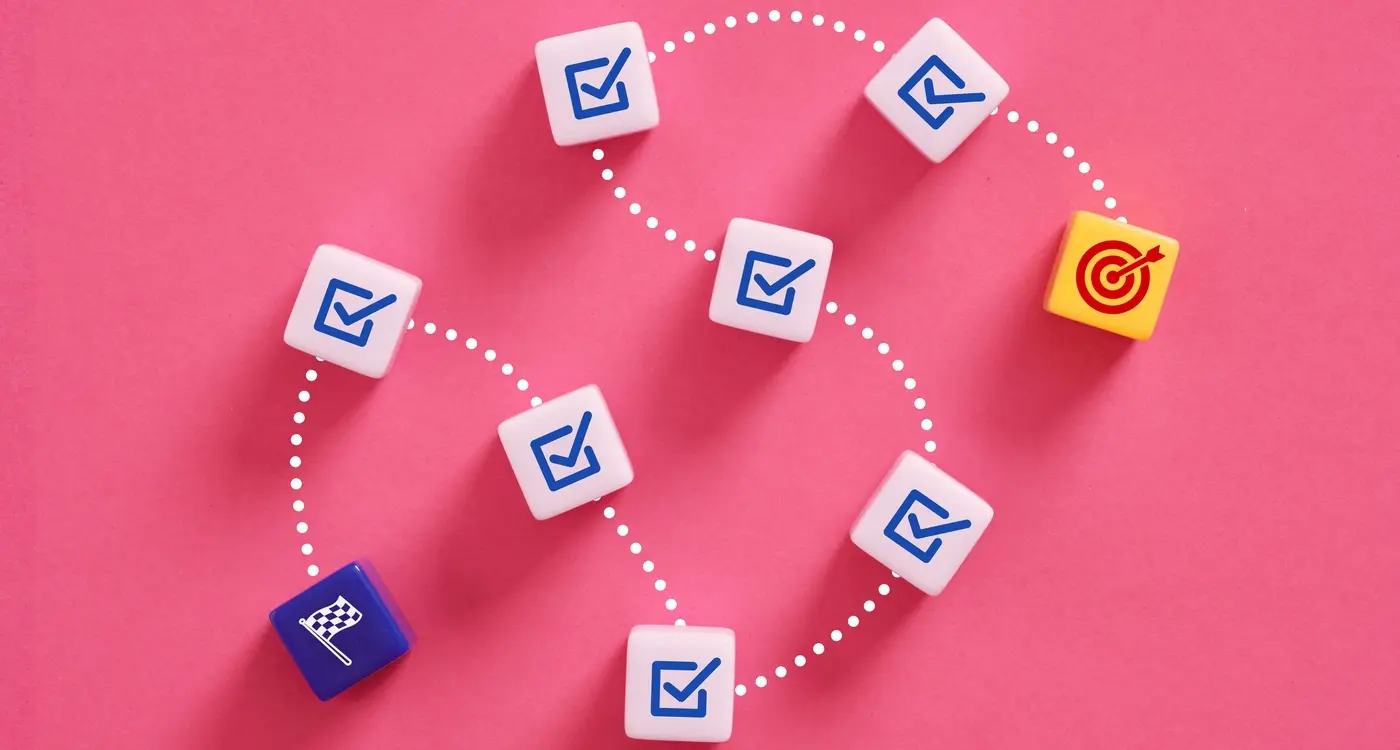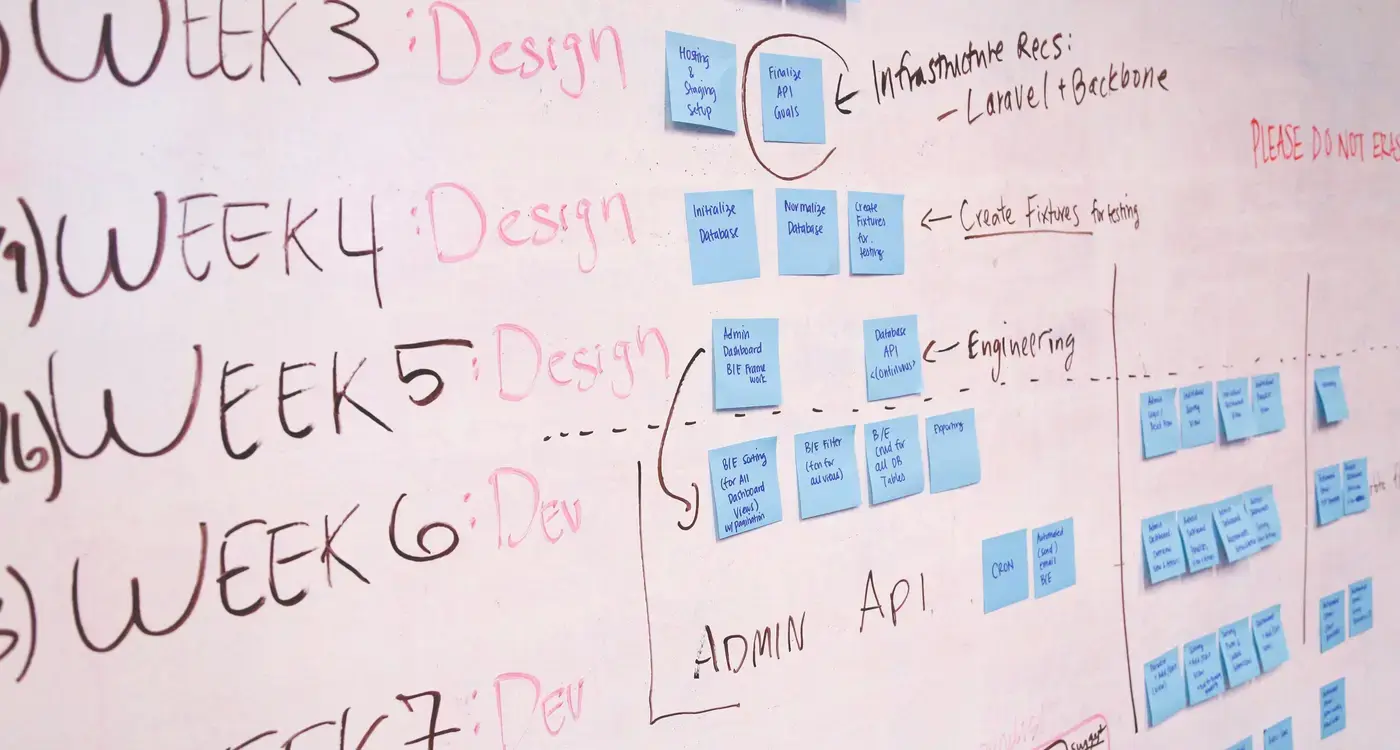From Concept to Launch: A Complete Mobile App Building Guide
Building a mobile app is rather like planning an exciting journey - you know where you want to end up, but the path ahead might seem a bit daunting. Whether you're a startup founder with a groundbreaking idea or an established business looking to expand your digital presence, understanding the mobile app development approach is crucial for success.
The most successful apps aren't just built; they're carefully crafted through a methodical process that transforms innovative ideas into user-friendly solutions.
We've guided countless entrepreneurs and businesses through the app building process, and we've learned that success lies in breaking down this complex journey into manageable steps. Think of it as building with LEGO bricks - each piece needs to fit perfectly with the next to create something remarkable.
In this comprehensive guide, we'll walk you through every stage of mobile app development, from the initial spark of an idea to the exciting moment when users start downloading your app. We'll share practical insights gained from our experience, helping you avoid common pitfalls and make informed decisions along the way.
Whether you're planning to create a simple lifestyle app or a complex business solution, the fundamentals remain the same. We'll explore each phase in detail, using plain language and real-world examples to illustrate key concepts. By the end of this guide, you'll have a clear roadmap for turning your app idea into reality.
Ready to embark on your app development journey? Let's start by understanding the crucial first step: defining your app's purpose and target audience.
Understanding Your App's Purpose
Before diving into the exciting world of app development, let's pause for a moment and focus on something crucial: understanding exactly why you're building your app. It's a bit like planning a journey - you wouldn't set off without knowing your destination, would you?
Identifying Your Core Problem
Every successful app starts with a clear problem it aims to solve. Think about apps like WhatsApp - it solved the expensive international messaging problem, or Deliveroo - it made getting restaurant food delivered as easy as pressing a button. What's the specific challenge your app will tackle? Write it down in simple terms, as if you're explaining it to a friend over coffee.
Know Your Audience Inside Out
Understanding your target users is absolutely essential. We've seen brilliant technical solutions fail simply because they didn't connect with their intended audience. Are you building for busy parents who need one-handed operation while carrying a toddler? Or perhaps for teenagers who value speed and social features above all else? The more detailed your user persona, the better your chances of creating something truly valuable.
At this stage, don't worry too much about features or technical specifications. Instead, focus on the fundamental value your app will provide. We often encourage our clients to create a simple statement: "My app helps [specific user group] to [solve specific problem] by [unique approach]." This clarity will guide every decision you make moving forward, from design choices to marketing strategies.
Remember, the most successful apps aren't just tools - they're solutions to real human needs. Take time to get this foundation right, and you'll be setting yourself up for success in the steps to come.
Planning Your App's Features
When it comes to the mobile app development approach, planning your app's features is rather like planning a road trip - you need to know where you're heading and what stops you'll make along the way. After working with hundreds of app projects, we've learnt that this stage can make or break your app's success.
Core Features vs Nice-to-Haves
Start by listing all possible features for your app, then divide them into 'must-haves' and 'nice-to-haves'. Think of it like packing for a holiday - you need your passport and tickets (core features), but that third pair of shoes might be unnecessary (nice-to-haves). This approach helps focus your app building process on what truly matters.
Remember, each feature you add increases development time and complexity. We often see clients wanting to include everything at launch, but starting with a solid foundation of core features usually leads to better results.
- User registration and profiles
- Essential functionality (your app's main purpose)
- Basic settings and configurations
- Search and navigation
- Error handling and feedback
Feature Prioritisation
Once you've identified your features, prioritise them based on user value and development complexity. This helps create a realistic roadmap for your app's development journey.
Create a feature comparison spreadsheet with three columns: Impact on Users, Development Effort, and Priority Level. This will help you make informed decisions about which features to include in your initial release.
Remember, successful apps typically start lean and grow based on user feedback. Just look at Instagram - it began as a simple photo-sharing app before evolving into the feature-rich platform we know today.
Designing the User Experience
Creating an app that users love isn't just about fancy features—it's about crafting an experience that feels as natural as having a chat with an old friend. Think about how you felt the last time you used an app that just 'clicked'. That's exactly what we're aiming for here.
The Building Blocks of Great UX
User experience design goes far beyond making things look pretty. It's about understanding how people interact with technology and creating seamless journeys that feel effortless. Just as you wouldn't build a house without a blueprint, your app needs a solid UX foundation.
- User Flow Mapping: Chart out every step of your user's journey
- Wireframing: Create simple sketches of each screen
- Prototyping: Build interactive models for testing
- Visual Design: Develop a consistent, appealing aesthetic
- Accessibility: Ensure everyone can use your app comfortably
Making It Feel Right
Remember how frustrating it was the last time you couldn't find a simple button in an app? That's exactly what we're trying to avoid. Good UX design follows familiar patterns—like placing the back button where users expect to find it—while adding unique touches that make your app memorable.
Think of your app's interface as a conversation. Every button, every screen transition, every colour choice is part of that dialogue. The goal is to create an experience so intuitive that users barely need to think about what they're doing—rather like how you don't think about which pocket you keep your house keys in; you just know.
Choosing the Right Technology Stack
Selecting the right technology stack for your mobile app is rather like choosing ingredients for a recipe - get it wrong, and the end result might not be quite what you hoped for. Having guided hundreds of clients through the mobile app development approach, we know this decision can feel overwhelming.
Native vs Cross-Platform Development
The first big decision you'll face is whether to go native (developing separately for iOS and Android) or cross-platform (using one codebase for multiple platforms). Native development typically offers better performance and user experience but requires more resources. Cross-platform frameworks like React Native or Flutter can help you launch faster and more cost-effectively.
The right technology stack isn't about following trends - it's about aligning technical choices with your app's unique requirements and business goals
Key Components to Consider
Your technology stack will need several crucial components: frontend frameworks (like Swift for iOS or Kotlin for Android), backend technologies (such as Node.js or Python), databases (MongoDB or PostgreSQL), and various third-party integrations. Think of these as building blocks in your app building process - each needs to work harmoniously with the others.
Remember, there's no one-size-fits-all solution. A simple messaging app might thrive with a different stack than a graphics-heavy gaming application. We've found that the best approach is to consider your app's specific requirements, your target audience, your budget, and your long-term scalability needs. Sometimes, simpler really is better - you don't need a sledgehammer to crack a nut!
Building Your App's Core Functions
After all the planning and design work, it's time to bring your app to life by developing its core functions. Think of this stage as assembling the engine of your car - without it, you've just got a beautiful shell that won't take you anywhere.
Starting with the Foundation
We always recommend beginning with your app's most essential features - the ones that directly solve your users' primary problems. For example, if you're building a fitness tracking app, start with the basic workout logging functionality before adding social sharing capabilities. This approach, often called MVP (Minimum Viable Product), helps ensure you're creating something useful from the outset.
Building Block by Block
Like constructing with LEGO, mobile app development works best when you build and test in small, manageable chunks. Start with one feature, make sure it works perfectly, then move on to the next. This method helps catch issues early and keeps the development process organised.
During this phase, your developers will be writing code, integrating APIs, setting up databases, and implementing security measures. It's rather like conducting an orchestra - every element needs to work in harmony with the others. While it might be tempting to rush through this stage, remember that solid, clean code will save you countless headaches down the road.
Don't forget to keep your initial design documents and user stories close at hand - they're your blueprint for success. And while technical development is crucial, always keep your end users in mind. Every function should serve a purpose and contribute to solving their problems or improving their experience.
Testing and Quality Assurance
Remember that feeling when you've downloaded a new app, only to find it crashes every time you try to use it? It's rather like buying a shiny new car that won't start - frustrating and disappointing. That's exactly why testing and quality assurance (QA) is such a crucial stage in the mobile app development approach.
Types of Testing Your App Needs
Think of testing as giving your app a thorough health check-up. We start with functional testing, making sure every button, form, and feature works exactly as intended. Then comes compatibility testing across different devices - after all, your app should work just as brilliantly on your gran's old iPad as it does on the latest iPhone.
Performance testing examines how your app behaves under pressure. Just like you wouldn't want a lift to break down when it's full of people, your app needs to handle multiple users and actions smoothly. We also conduct security testing to ensure user data stays safer than your grandmother's secret recipe book.
User Acceptance Testing
The final and perhaps most exciting part of the app building process is user acceptance testing. This involves real people - your potential users - taking your app for a test drive. Their feedback is pure gold, helping identify issues that automated testing might miss, like confusing navigation or unclear instructions.
Create a detailed bug-tracking system from day one of testing. It might seem like extra work, but it's like having a good filing system - it saves countless hours of headaches later and ensures no issues slip through the cracks.
Remember, thorough testing isn't just about finding problems - it's about ensuring your users get that satisfying, smooth experience that'll keep them coming back for more.
Preparing for App Store Launch
After months of hard work developing your mobile app, you're probably feeling a mix of excitement and nervousness about the upcoming launch. It's completely normal - we've guided hundreds of app creators through this crucial phase, and we understand those butterflies in your stomach!
App Store Guidelines and Requirements
Both Apple's App Store and Google Play Store have specific requirements that need careful attention. Think of these guidelines as a thorough airport security check - every detail matters. You'll need to prepare high-quality screenshots, write compelling app descriptions, and ensure your app meets all technical requirements. One often-overlooked detail is the age rating system - rather like choosing the right certificate for a film release.
Pre-launch Checklist
Remember to prepare your app's metadata, including its unique name, keyword-optimised description, and eye-catching icon. Just as you wouldn't send a CV without proofreading it, don't submit your app without double-checking these elements. Create a preview video that showcases your app's best features - think of it as your app's elevator pitch to potential users.
Privacy policies and terms of service need to be properly documented and easily accessible. If your app collects any user data (even something as simple as a username), you'll need to be transparent about it. British data protection laws, like GDPR, require clear communication about data handling.
Once everything is in place, submit your app for review. The review process can take anywhere from a few days to a couple of weeks. Use this waiting period wisely to finalise your marketing materials and prepare for the exciting journey ahead.
Marketing Your Mobile App
After investing countless hours in your mobile app development approach, it's time to get your creation in front of the right audience. Think of your app as a brilliant stage performer - even the most talented artists need the right promotion to fill seats!
The best mobile apps don't just solve problems; they tell stories that resonate with their users' daily lives
Pre-launch Marketing Essentials
Start building buzz before your app hits the stores. Create a compelling landing page that showcases your app's unique features, and consider starting a blog to share development updates. Social media platforms are brilliant for building an early following - we've seen apps gain thousands of followers before launch just by sharing sneak peeks and behind-the-scenes content.
Post-launch Growth Strategies
Once your app building process is complete and you've launched, focus on acquiring and retaining users. Encourage reviews from early adopters - they're worth their weight in gold! Consider implementing a referral programme (just like how Dropbox grew exponentially by offering extra storage for referrals). Don't forget App Store Optimization (ASO) - it's like SEO's cousin for mobile apps, helping your app appear in relevant searches.
Remember to track your marketing efforts using analytics tools. Understanding which channels bring the most engaged users helps you focus your resources wisely. And here's a little secret from our experience: sometimes the most effective marketing doesn't feel like marketing at all. Create shareable moments within your app that naturally encourage users to spread the word - like how Instagram made every amateur photographer feel like a professional artist.
App Maintenance and Updates
Launching your app is just the beginning of its journey. Think of your app as a living, breathing entity that needs regular care and attention to stay healthy and relevant. Just as you wouldn't buy a car and never service it, your app requires consistent maintenance to keep running smoothly.
Essential Maintenance Activities
At Glance, we've seen how proper maintenance can extend an app's lifespan and keep users happy. Regular upkeep isn't just about fixing bugs - it's about evolving your app alongside your users' needs and technological advances.
- Monitor app performance and crash reports daily
- Address user feedback and bug reports promptly
- Update security features and patch vulnerabilities
- Optimise code for better performance
- Keep third-party integrations up-to-date
Planning Your Update Schedule
Remember how frustrating it is when your favourite app suddenly stops working after your phone updates? That's exactly what we want to avoid. We recommend establishing a regular update schedule, typically every 4-6 weeks for minor updates and every 3-4 months for major ones.
Each update should bring value to your users, whether it's performance improvements, new features, or better security. Think of these updates as opportunities to show your users you're actively listening to their feedback and improving their experience. Just like a shopkeeper who regularly refreshes their window display, you need to keep your app looking and feeling fresh to maintain user interest.
Remember to communicate changes clearly to your users through release notes and in-app notifications. No one likes surprises when it comes to their favourite apps!
Conclusion
Building a mobile app is quite like putting together a complex puzzle - every piece needs to fit perfectly to create something truly remarkable. Throughout this guide, we've walked you through the essential steps of the mobile app development approach, from that first lightbulb moment to launching your creation into the world.
Remember, success in app development isn't just about following a rigid app building process - it's about understanding your users, being flexible, and maintaining a clear vision of what you want to achieve. Whether you're building a simple productivity tool or the next social media sensation, the fundamentals we've covered will serve as your foundation.
We've seen countless apps come and go over our years in the industry, and the most successful ones share a common thread: they're built with genuine care for the end user. Think of popular apps like WhatsApp or Spotify - they didn't just appear overnight. They evolved through careful planning, constant refinement, and an unwavering commitment to their users' needs.
As you embark on your own app development journey, remember that it's perfectly normal to feel overwhelmed at times. Building an app is a significant undertaking, but by breaking it down into manageable steps and focusing on one phase at a time, you'll find the process much more approachable.
Don't forget that creating an app is just the beginning. The most successful apps continue to grow and evolve long after their initial launch. Stay curious, keep learning, and most importantly, stay connected with your users - they're the ones who will help shape your app's future.
Share this
Subscribe To Our Blog
You May Also Like
These Related Stories

Edge Computing For Mobile Apps: A Complete Beginner's Guide

Mobile App Development for Complete Beginners: Everything You Need to Know





